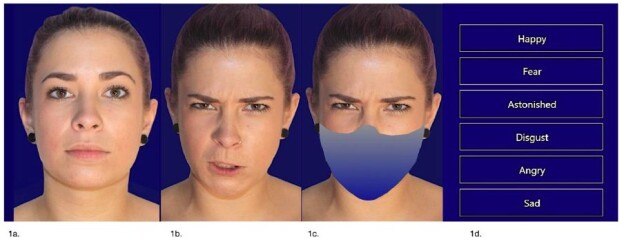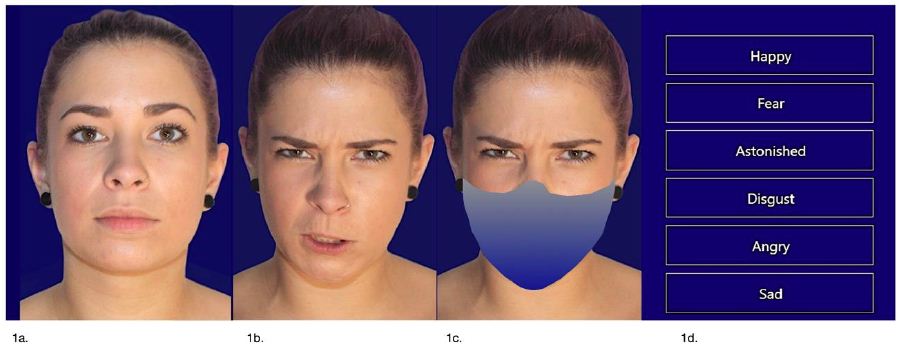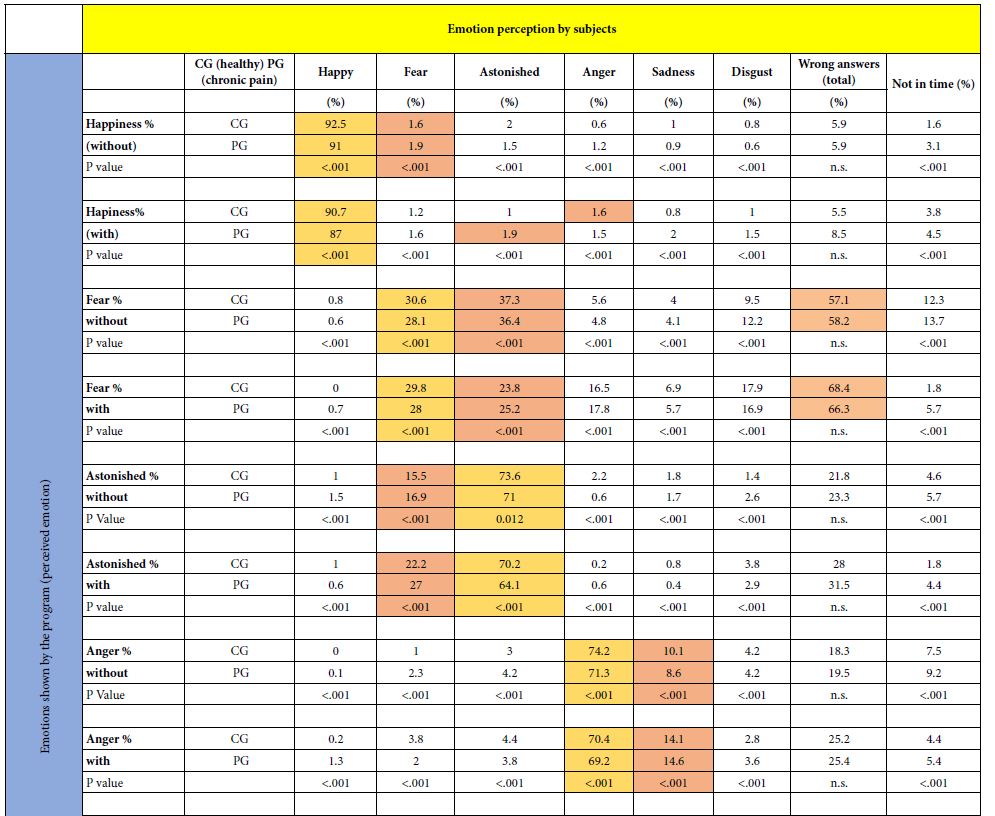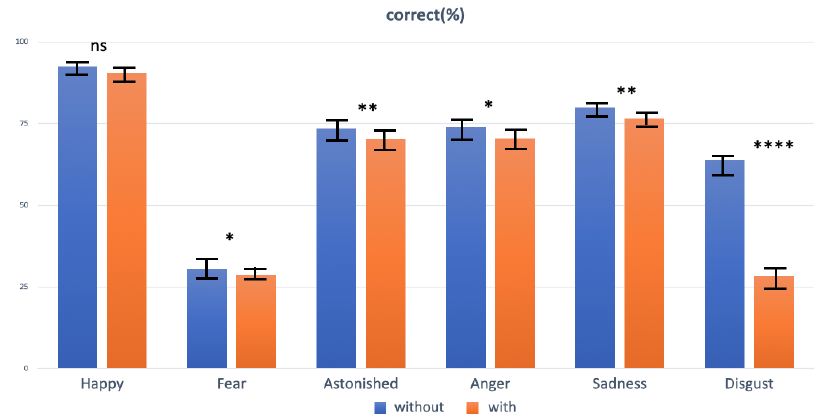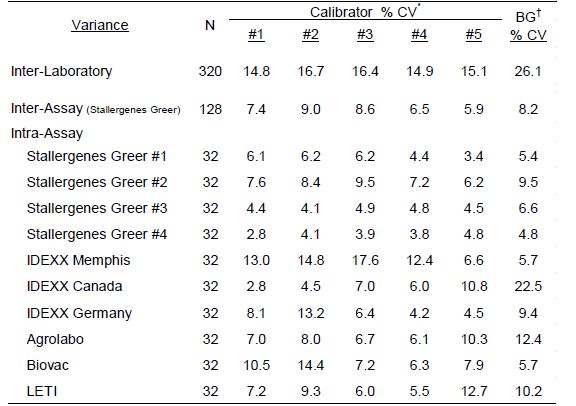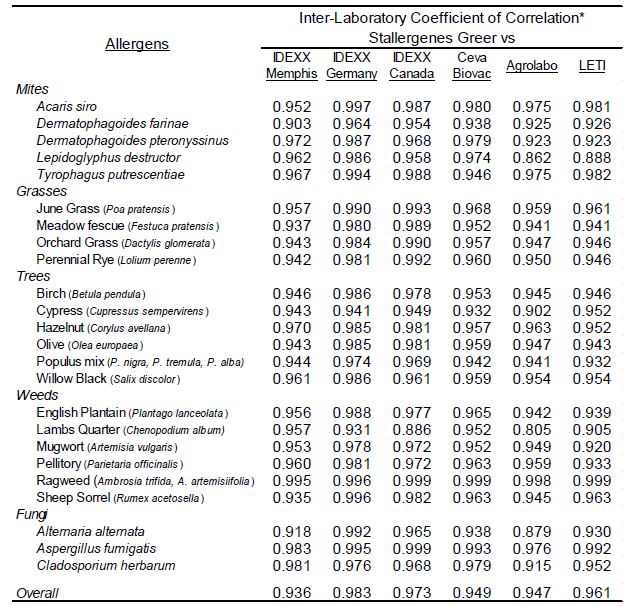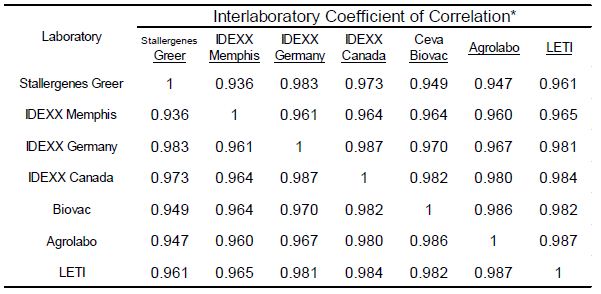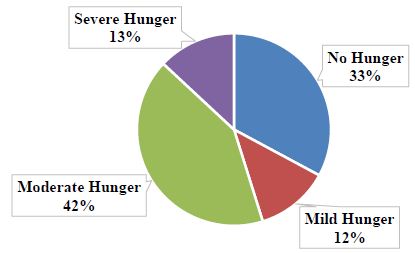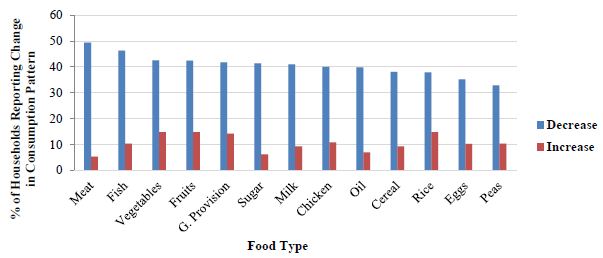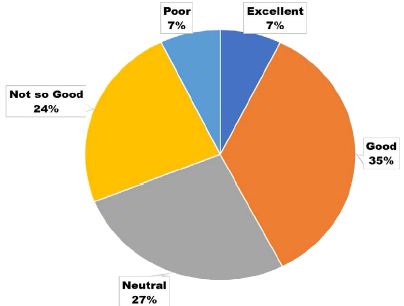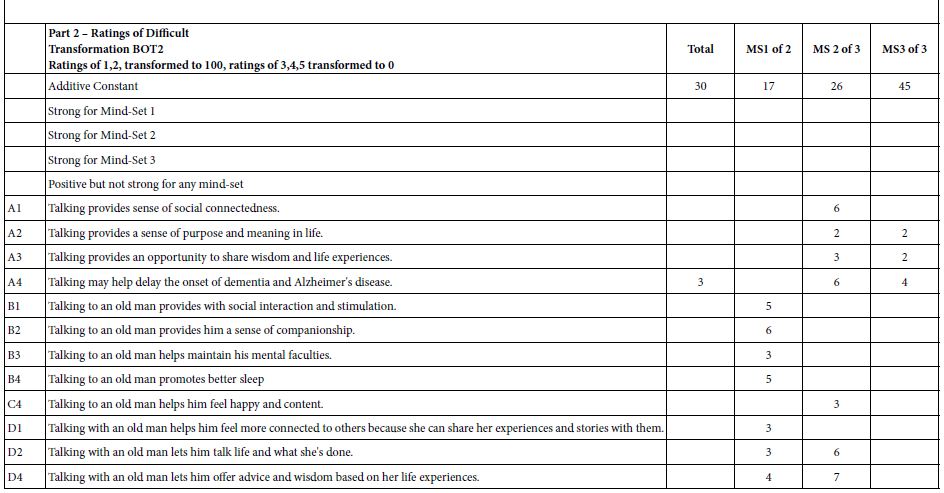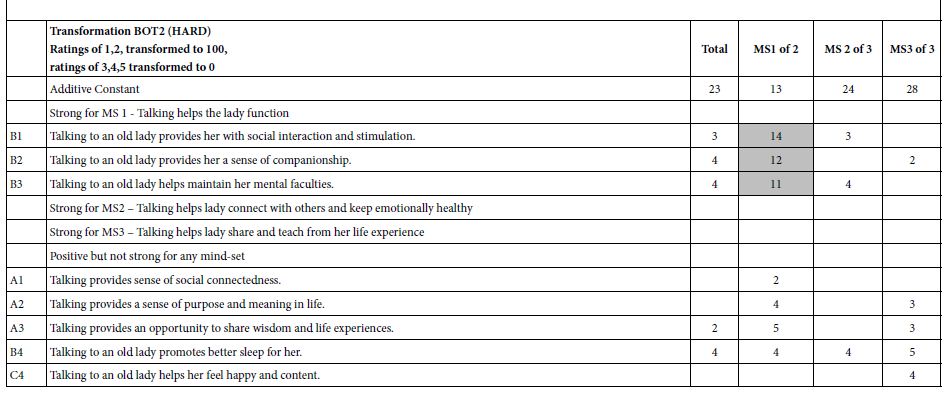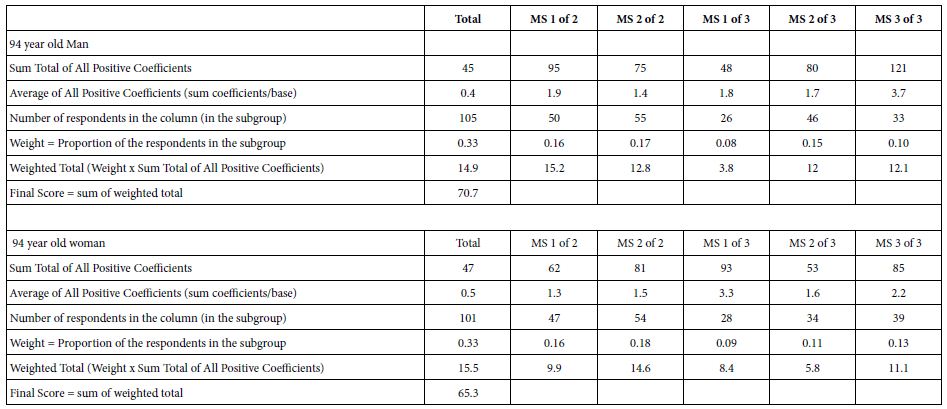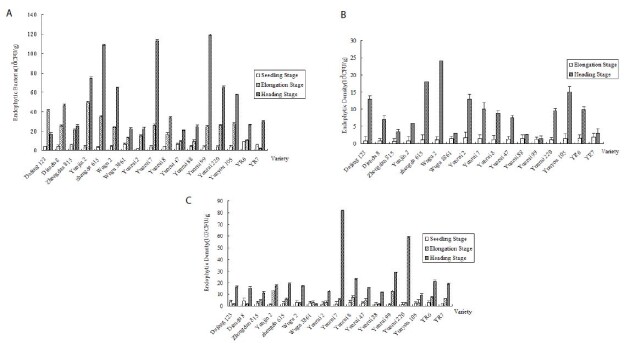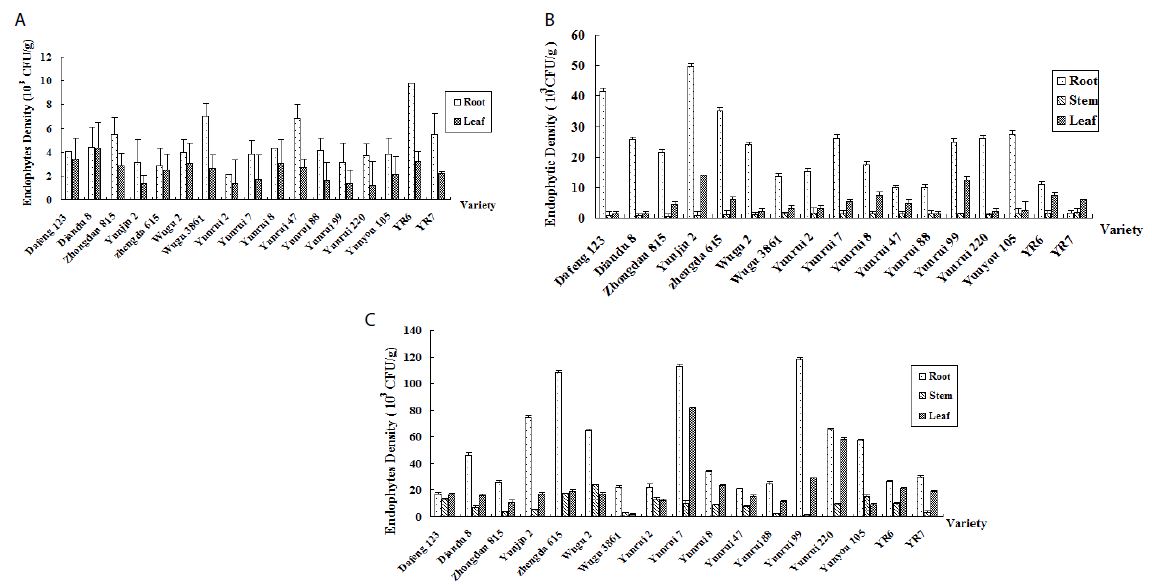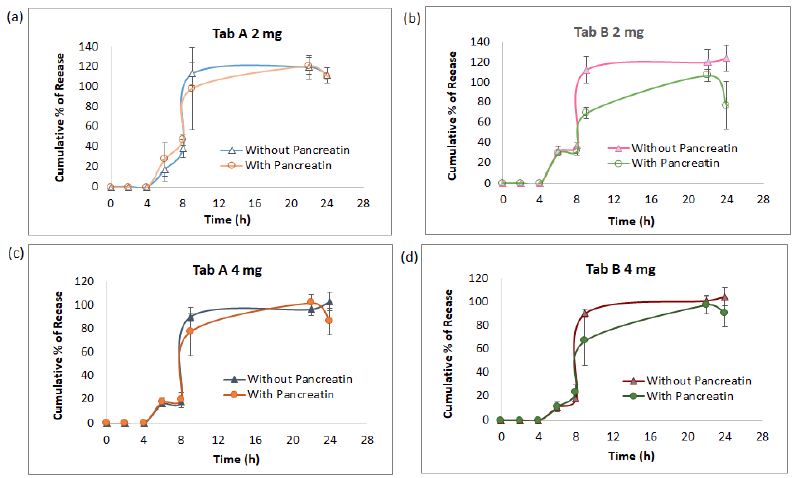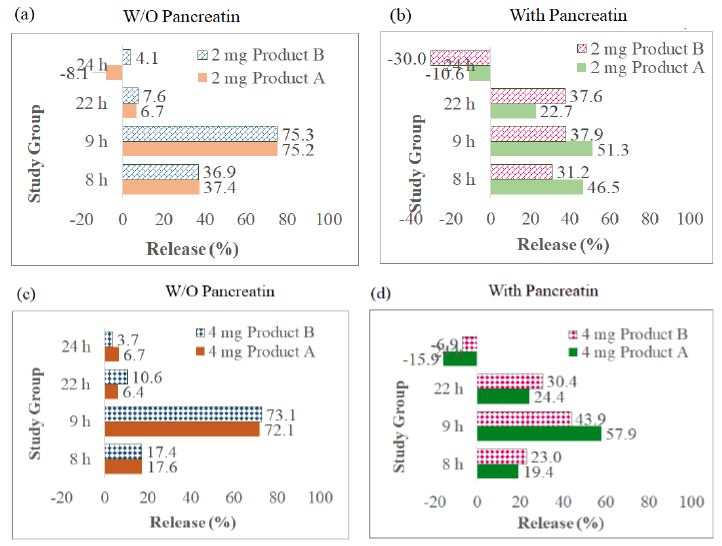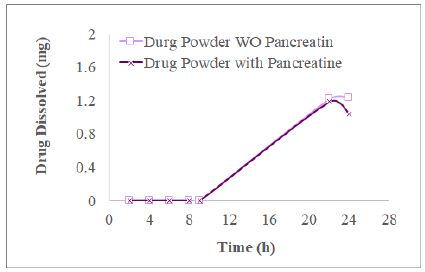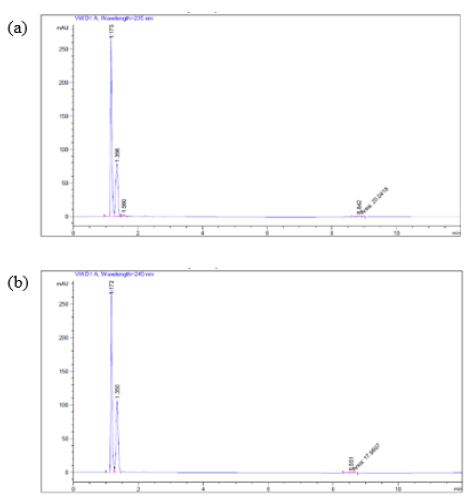Abstract
In this review article, author discusses about the biomedical importance of carbon dioxide in regulating the cellular homeostasis. Even more important, the author had already presented a hypothesis regarding the role of carbon dioxide in regulating cellular homeostasis, which was published in the program and abstracts (serial number 237) of 1st world congress on stress held in USA, October 4-7, 1994. The author goes even further to explain how chronic psychosocial stress and unhealthy diets are the two key risk factors for developing hypocapnia, low-grade metabolic acidosis and insulin resistance, which, in turn, has been shown to predict the development of age-related diseases, including hypertension, coronary heart disease, stroke, cancer, and type 2 diabetes. The writer of this review posits that there is a definite connection between chronic emotional stress, hyperventilation, reduced urine net acid excretion and low-grade metabolic acidosis. The author further explains that like in conventional exercises, therapeutic increase in carbon dioxide in the blood (respiratory acidosis) by way of self-induced hypoventilation is the key to eliminating metabolic acidosis.
Keywords
Chronic psychogenic hyperventilation, Hypocapnia, Low-grade metabolic acidosis, Pranayama and breath retention as an intervention, Renal compensation for respiratory alkalosis and acidosis
Introduction
A Connection between Chronic Hyperventilation and Metabolic Acidosis
Hyperventilation happens most often to people 15 to 55 years old [1]. When a person is under stress, their breathing pattern changes. Typically, an anxious person takes small, shallow breaths, using their shoulders rather than their diaphragm to move air in and out of their lungs. This style of breathing (hyperventilation) causes blood concentration of carbon dioxide (PaCO2) to fall below healthy levels, a condition called hypocapnia [2,3].
In normal subjects, a decrease in PaCO2 (hypocapnia) induced via hyperventilation, elicits two responses with opposing effects on blood pH. In the short term, a decrease in PaCO2 will increase pH of extracellular fluid (respiratory alkalosis). Over a longer period (2 to 6 hours), however, sustained hypocapnia is further compensated by renal response – renal net acid (renal ammonium and titratable acid) excretion decreases, resulting in a reduction in plasma bicarbonate and extracellular fluid acidosis [4,5]. Low-grade metabolic acidosis is a condition characterized by a slight decrease in blood pH, within the range considered normal. Chronic hyperventilation and acidogenic diets when coupled with an age-related decline in kidney function of normal humans (due to failure to excrete the normal acid load generated by protein metabolism) may further influence the occurrence of such a condition.
If these conditions occur in a prolonged, chronic way, low-grade metabolic acidosis can become significant and predispose to metabolic imbalances as well as the increased risk of chronic diseases [6].
It is conceivable that as an individual ages blood acidity will be regulated at progressively higher levels and plasma bicarbonate concentration and PaCO2 at progressively lower levels.
Such progressively worsening metabolic acidosis, however mild, might over time have deleterious effects, perhaps contributing to the pathogenesis of many of the physiologic disturbances and degenerative diseases of aging. Yet, practically no attention has been given to the effect of age on the acid-base composition of the blood in healthy subjects [7].
Breathing Retraining
The most common cause of respiratory alkalosis (hypocapnia) is hyperventilation, which causes more carbon dioxide to be exhaled out. If the cause is anxiety, various breathing exercises might help slow breathing and reduce hyperventilation [8]. There is good evidence that breathing rehabilitation is a useful method for achieving reduced anxiety/panic levels [9].
Respiratory Alkalosis (Hypocapnia) – Cause and Consequences
Respiratory alkalosis is a pathology that is secondary to hyperventilation [10]. The decrease in PaCO2 (hypocapnia) develops when a strong respiratory stimulus (i.e., anxiety or fear) causes the respiratory system to remove more carbon dioxide than is produced metabolically in the tissues [11].
Respiratory alkalosis (hypocapnia) can be acute or chronic [10]. In acute respiratory alkalosis, the PaCO2 level is below the lower limit of normal and the serum pH is alkalemic [11]. However, in chronic respiratory alkalosis, a common acid-base disturbance [5], the PaCO2 level is below the lower limit of normal, but the pH level is relatively normal or near normal due to compensatory mechanisms [11]. Since renal compensation for chronic respiratory alkalosis involves a decrease in HCO3 – reabsorption. It may also mean you have: Metabolic acidosis [12,13].
Potential Causes of Low-grade Metabolic Acidosis in Normal Subjects
Our modern lifestyle, which involves some combination of, (1) Chronic psychogenic hyperventilation as a result of the stress one experiences while sitting still and, (2) the acidogenic diet we eat, are the two main root causes for the development of low-grade metabolic acidosis.
Additionally, age-related renal functional decline in healthy older adults is another risk factor [7,14].
Pathogenesis
(1) Chronic Psychogenic Hyperventilation
Does persistent hypocapnia cause metabolic acidosis? The answer is yes! Because:
Since chronic respiratory alkalosis is a common acid–base disturbance characterized by a primary and sustained decrease in arterial carbon dioxide tension (PaCO2) – that is, by primary hypocapnia due to hyperventilation.
A decrease in PaCO2 (hypocapnia) elicits two responses with opposing effects on blood pH. In the short term, a decrease in PaCO2 alkalinizes extracellular fluid. Over a longer period (6 to 72 hours), however, renal acid excretion is inhibited, resulting in a reduction in plasma bicarbonate that acidifies extracellular fluid and thereby corrects blood pH toward normal. Furthermore, stimulation of the medullary respiratory center in metabolic acidosis induces secondary hyperventilation, resulting in a decrease in PaCO2 (secondary hypocapnia) [5].
We live in modern times, and we are exposed to the modern lifestyle – the most dangerous aspects of which are the inordinate amount of stress we experience while sitting still and the fake foods we eat [15]. It is important to note that according to research studies, over 90% of the modern population have chronic hyperventilation hidden in the modern lifestyle [16].
In normal subjects, chronic hyperventilation lowers plasma bicarbonate concentration (metabolic acidosis), primarily by inhibiting renal ammoniagenesis and the urinary excretion of net acid in response to persistent hypocapnia (PaCO2) [4,5].
(2) Acidogenic Diet
Our dietary habits tend to tip the balance towards acidification. Diets with high acid load produces changes in the acid base balance. There is an association between low-grade metabolic acidosis with the development of age-related diseases (i.e., hypertension, diabetes, chronic kidney disease etc.) [17]
Several studies have indicated the influence of low-grade metabolic acidosis on health outcomes, and diet is one of the factors that directly influence this condition [18].
(3) Age-related Renal Functional Decline
In normal adult humans eating ordinary American diets, systemic acid-base equilibrium is maintained within narrow limits from day to day, despite a continuing input of precursors of fixed acids in the diet.
Day-to-day stability of acid-base composition of the systemic circulation is critically dependent on excretion of acid in urine, the steady-state rate of which is adjusted by the healthy kidney in keeping with the prevailing rate of endogenous acid production.
Considering that renal functional integrity progressively declines with age which limit the adaptive mechanisms responsible for maintaining acid-base homeostasis, it is quite conceivable that as an individual ages, blood acidity will be regulated at progressively higher levels.
Such progressively worsening metabolic acidosis, however mild, might over time have deleterious effects, perhaps contributing to the pathogenesis of many of the physiologic disturbances and degenerative diseases of aging. Therefore, the role of age-related metabolic acidosis in the pathogenesis of the degenerative diseases of aging warrants consideration [7,14].
Chronic Metabolic Acidosis – Functional Disorders in Elderly Persons
Age-related metabolic acidosis is a chronic condition that many people in the Western world have but do not realize it [18]. Metabolic acidosis has been associated with a range of physiological derangements of importance to the health of older people such as: [19]
(i) Metabolic Alterations
Metabolic disorders of high concern in today’s society include obesity, insulin resistance and diabetes, hypoxia and oxidative stress, chronic inflammation, metabolic acidosis and metabolic syndrome, hormone imbalance, kidney disease, cardiovascular disease, excess calcium excretion and osteoporosis, and cancers of all kinds [20,21].
(ii) Organ Dysfunction
Acidosis may adversely affect renal function, cardiovascular health, muscle function and bone health, and impairments in these organ systems would be expected to have an adverse impact on physical function and quality of life – key outcomes for aged people [19].
(iii) Premature Aging and an Increased Risk of Death
Chronic tissue acidosis accelerates the ageing process and creates an environment conducive to the development of a number of diseases [22]. Stated otherwise, acidosis is the first step towards premature aging and accelerated oxidative cascades of cell wall destruction [23].
As an individual ages blood acidity will be regulated at progressively higher levels and plasma bicarbonate concentration and PaCO2 at progressively lower levels.
Such progressively worsening metabolic acidosis, however mild, might over time have deleterious effects, perhaps contributing to the pathogenesis of many of the physiologic disturbances and degenerative diseases of aging. Yet, practically no attention has been given to the effect of age on the acid-base composition of the blood in healthy subjects [7].
Solution of the Problem?
Treating age-related metabolic acidosis with lower CO2 levels is obviously a matter of raising carbon dioxide levels in the blood [24]. If your CO2 levels are too low, the first step your doctor will take is treating the underlying condition (hyperventilation) that is causing the imbalance [25]. How does one do that? The answer is already obvious. Hold your breath. Practice pranayama [15].
According to Patanjali, the founder of Yoga philosophy, pranayama is the gradual cessation of breathing. The eventual goal of pranayama is the complete suspension of the breath for as long as the practitioner wishes [26]. Holding your breath also causes the amount of carbon dioxide building up in your body [27]. Depending on your ability to tolerate CO2, you can become a super-healthy person [15]. Remember, self-induced mild hypoventilation is said to have some benefits, but of course uncontrolled or long-term hypoventilation is to be avoided [28]. It is best to maintain a normal relaxed breathing pattern whenever you are consciously aware of your breathing [29]. Fortunately, we also have the power to deliberately change our own breathing [2].
Benefits of Pranayama?
Scientific studies have shown that controlling your breath can help to manage stress and stress-related conditions [2] by normalizing the baseline levels of carbon dioxide (eucapnia) in the blood, making people less prone to hyperventilation [30].
Furthermore, practicing pranayama (breath regulation or breath control) can enhance quality of life and aid in longevity [31-33]. Other beneficial effects might involve a reduction of distress, blood pressure, and improvements in resilience, mood, and metabolic regulation [34].
In conclusion, it can be safely assumed that controlling or reversing low-grade metabolic acidosis, by yoga breathing exercises and dietary interventions, is likely to be an important way to prevent, or reduce the severity of age-related diseases.
Reversing Age-related Metabolic Acidosis – An Intervention
It is important to note that by working on the continuum of yogic breath challenge, CO2 tolerance, and renal compensation of respiratory acidosis, the goal of prevention or correction of metabolic acidosis can be achieved. Respiratory challenge is the modification of arterial carbon dioxide concentration to induce a change in cerebral function or metabolism. You can experiment with breath hold exercises in order to increase your CO2 tolerance. Although breathing is something your body naturally does, it’s also a skill that can be sharpened [35].
The yogic technique of respiratory challenge is based on a simple modification of respiratory rate, including breath hold [36]. Notably, rapid increase in Pa,CO2 evokes an immediate response by hyperventilation to restore normality. However, a more gradual increase in Pa, CO2 allows renal compensation to occur [37].
Improved CO2 tolerance reduces the urge to breathe and controlled breath holding (hypoventilation) will build CO2 endurance [28]. Research has shown that lower chemosensitivity to hypercapnia in yoga practitioners may be due to an adaptation to low arterial pH and high PaCO2 for long periods [38,39].
Because renal compensation of respiratory acidosis occurs by increased urinary excretion of acid (hydrogen ions) and resorption of HCO3− [40]. By adjusting the amounts of hydrogen ions secreted in the urine and reabsorption of bicarbonate ions from the urine back to the blood, kidneys balance the blood pH, and [41] as a result, in a compensated respiratory acidosis, although the PCO2 is high, the pH is within normal range [42], [43-45].
Since, breathing is an automatic function of the body that is controlled by the respiratory centre of the brain. When we feel stressed, our breathing rate and pattern changes as part of the ‘fight-or-flight response’. Fortunately, we also have the power to deliberately change our own breathing [2]. Hence changing your breathing to a normal pattern can restore healthy CO2, which will eliminate symptoms of hyperventilation [29]. Further, by adjusting the speed and depth of breathing, the brain and lungs are able to regulate the blood pH minute by minute [46,47].
Biomedical Importance of Carbon Dioxide
CO2 plays various roles in the human body including regulation of blood pH, respiratory drive, and affinity of hemoglobin for oxygen (O2). Fluctuations in CO2 levels are highly regulated and can cause disturbances in the human body if normal levels are not maintained, [48] causing disruption of enzyme function, loss of insulin sensitivity, and cellular metabolic adaptations [49].
Benefits of Carbon Dioxide
Carbon Dioxide Dependent Signal Transduction
Research shows that changes in CO2 influence cellular function through modulation of signal transduction networks. Additionally, there is significant cross-talk between these signal transduction pathways as they respond to changes in CO2 [50-52].
Elevated CO2 regulates the Wnt signaling pathway in mammals [53]. The Wnt signaling pathway is one pathway that may contribute to aging [54]. Downregulation of Wnt signaling is an early signal for formation of facultative heterochromatin and onset of senescence in primary human cells [55].
Natural Sedative and Tranquilizer
CO2 is a powerful natural sedative and tranquilizer [56]. Carbon dioxide calms the nervous system, reducing depression, anxiety, and even the symptoms of epilepsy [57].
While considering the mental health of people, the most missing chemical in the human brain is CO2 [29]. Because a lack of CO2 in the brain leads to “spontaneous and asynchronous firing of neurons” (medical quote) “inviting” virtually all mental and psychological abnormalities.
In conscious humans, research findings suggest that increased CO2 levels (mild hypercapnia) cause a reduction in the resting-state neural activity of the brain, which in turn, enters a lower arousal state [58].
Bioavailability of Oxygen
Carbon dioxide is essential for internal respiration in a human body [59]. Increase in the blood concentration of carbon dioxide lowers hemoglobin’s affinity for oxygen, which in turn, enhances the unloading of oxygen into tissues to meet the oxygen demand of the tissue. The Bohr effect describes hemoglobin’s lower affinity for oxygen secondary to increases in the partial pressure of carbon dioxide and/or decreased blood pH [60].
Gardian of the pH
Carbon dioxide is a guardian of the pH of the blood, which is essential for survival. The buffer system in which carbon dioxide plays an important role is called the bicarbonate buffer system. It is an acid-base homeostatic mechanism in order to maintain pH in the blood, among other tissues, to support proper metabolic function [59,61].
Anaplerosis
CO2 is a ubiquitous product of cellular metabolism and an essential substrate for carboxylation reactions, required for refueling the TCA cycle via oxaloacetate during growth on glycolytic carbon (pyruvate) sources. Remember, De novo protein synthesis is required for adaptive response to oxidative and other types of stress, indicating that newly synthesized protective proteins are necessary for adaptation [62].
Cardiovascular System
CO2 is helpful in dilating the smooth muscle tissues, and it regulates the cardiovascular system [63].
Breathing
Breathing is exquisitely sensitive to the alteration in the CO2 tension of the blood [64]. Regularity and Smoothness of Breathing are controlled by CO2 [56].
Bicarbonate (Electrolytes) in Cell Volume Regulation
Bicarbonate (a form of CO2) belongs to a group of electrolytes, which help keep your body hydrated and make sure your blood has the right amount of acidity [65]. Compared to the widely studied roles of sodium, potassium, and chloride in cell volume regulation, the effects of proton and bicarbonate are less understood [66].
Bicarbonate Dependent Soluble Adenylyl Cyclase Activity
As Soluble adenylyl cyclase (sAC) activity is stimulated by HCO3(-). In the absence of sAC, lysosomes fail to fully acidify, lysosomal degradative capacity is diminished, autophagolysosomes accumulate [67].
Numerous Other Benefits of CO2
Fat-burning
Carbon dioxide increases fat burning through the peroxisomes. When the carbon dioxide levels are low, there is less activity in the peroxisomes [68].
Antioxidant
Carbon dioxide is an antioxidant and prevents oxidative stress. CO2 interacts both with reactive nitrogen species and reactive oxygen species. Several mechanisms have been suggested to explain the protective role of CO2 in vivo [69].
Anti-inflammatory Effects
CO2 reduces inflammation throughout the entire body [15]. Recent advances have identified the repression of the NF-κB transcriptional pathway by CO2 in a manner which may be of therapeutic benefit in chronic inflammatory disease [70].
Antimicrobial Activity
Carbon dioxide gas is an antiviral, antibacterial, and anti-infection agent effective not only on solid surfaces but also in aqueous solutions and water treatment settings [71].
Bone Mineralization
Ancient yogis enjoyed a reputation for having incredibly strong, “unbreakable” bones.
Decongestant
It relieves nose and sinus congestion.
Improved Digestion
CO2 stimulates hydrochloric acid production in the stomach.
Cancer Prevention
Carbon dioxide helps oxygen to pass into cells. When cells are properly oxygenated, they are more likely to burn energy efficiently.
Healthy Skin
It helps the skin maintain itself, giving you a soft, buoyant glow, as opposed to the sunken, dry pallor of a stressed-out asthma sufferer.
Carbon Dioxide Structures Water
It is the body’s ability to structure water when it has a healthy dose of carbon dioxide to combine with oxygen and electrolytes. The body becomes a living battery filled with an electrical charge! This is the true magic behind holding the breath. Structured water also acts like a liquid crystal, and it conducts electricity like a superconductor.
Performance
CO2 increases blood flow. There is a relationship between blood flow volume and muscle fatigue, and increased blood flow reduced muscle fatigue. Second, Overtime, increased CO2 stimulates the mitochondria in your cells to multiply. The more mitochondria you have, the more energy you have increasing your level of performance in everything you do [15].
Solvent Power
Forming an acid as it dissolves in water, carbon dioxide increases the solvent powers of many substances. The oxygen in the atmosphere becomes available to living cells as it is dissolved in the liquid medium outside and inside the cell [72,73].
Plasma Membrane Permeability
CO2 not only freely diffuses through the cellular membrane, it may also accumulate in the same, thus increasing its permeability and fluidity [74]. Cell membrane plays a very important role in the maintenance of cellular homeostasis. On the one hand, the membrane prohibits the entry of toxic or unwanted substances. On the other hand, it also prevents the exit of important or useful substances [75].
Gene Expression
Carbon dioxide (CO2) is sensed by cells and can trigger signals to modify gene expression in different tissues leading to changes in organismal functions [53]. While the effects of in vivo hypercapnia on gene expression are likely to occur in part through indirect mechanisms such as altered neuronal activity or the release of stress hormones, recent evidence suggests that CO2 may also directly regulate gene expression through the NF-κB pathway [76].
Vagus Nerve Stimulation
Carbon dioxide produces a vagotropic effect. Since carbon dioxide has a direct effect on the nuclei of vagus nerves and exerts a stimulating effect [77]. Furthermore, cardiac slowing by hypercapnia occurs through a direct effect of CO2 rather than pH and that the mechanism has both central and peripheral mediation; the former transmitted by vagal pathway with a specific site of action at the sinus node [78].
Increasing your vagal tone activates the parasympathetic nervous system, and having higher vagal tone means that your body can relax faster after stress to overcome anxiety and depression, and better manage them when they arise.
Studies have revealed that slow respiration and extended exhalation stimulate vagus nerve. This results in parasympathetic nervous system (PNS) over sympathetic nervous system (SNS) dominance, structural and functional changes in higher cortical areas through autonomic projections, and is thus responsible for effects on physical health, mental health and cognition [79].
Summary
When the body becomes more acidic with age blood carbon dioxide concentration will be regulated at increasingly lower levels [7].
A lack of carbon dioxide is itself a starting point for different disturbances in the body. If carbon dioxide deficiency continues for a long time then it can be responsible for diseases, ageing and even cancer [80].
Internal acid–base homeostasis is fundamental for maintaining life. Normal acid-base homeostasis requires that both CO2 and HCO3− (a form of CO2) be normal [81].
Continuously produced through respiration – we produce about 1.0 kg of CO2 per day – it forms the bicarbonate/CO2 pair, our main physiological buffer [82].
The carbon dioxide–bicarbonate system is important in maintaining homeostatic control, which regulates an organism’s internal environment and maintains a stable, constant condition of properties like temperature, pH, heart rate, blood pressure, satiety (fullness), and circadian rhythms (sleep and wake cycles) [83].
Important
Chronically low CO2 levels may be associated with health risks:
When the blood is acidic and HCO3- levels are low, the body’s natural response is to increase its breathing rate. By breathing faster, more CO2 is exhaled out of the body, which decreases CO2 blood levels [25].
A lack of carbon dioxide is itself a starting point for different disturbances in the body. If carbon dioxide deficiency continues for a long time then it can be responsible for diseases, ageing and even cancer [80].
Treating age-related metabolic acidosis with lower CO2 levels is obviously a matter of raising carbon dioxide levels in the blood [50].
In conclusion, Carbon dioxide (CO2) is a fundamental physiological gas [24]. Therefore, CO2 homeostasis is indispensable for life [84]. “The theory of life, in brief, is such that carbon dioxide is the basic nutrition of every life form on Earth…. It acts as the regulator of all functions in the organism, it maintains the internal environment of the organism, it is the vitamin of all vitamins.” Dr. K. P. Buteyko [85].
Yale University applied physiology professor Yandell Henderson considered carbon dioxide as a “chief hormone of the entire body; it is the only one that is produced by every tissue and that probably acts on every organ.”
From naturopathic doctors (ND’s) perspectives, carbon dioxide can indeed be seen as the missing link in dealing with stress. They have explored how depleted carbon dioxide, or hypocapnia, can have a role in altering pH levels, disrupting oxygen delivery to the tissues, and perpetuating stress [86].
References
- Fields L (2021) What Is Hyperventilation?Lung Disease & Respiratory Health.
- Better Health Channel (2015) Breathing to reduce stress.
- Samuel B, Guze SB, Gabbard J, Roos A, Saslow G (1952) Chronic Psychogenic Hyperventilation. AMA Arch NeurPsych 67: 434-440. [crossref]
- Alan SL, Yu MB, BChir (2020) Disorders of Acid-Base Balance, in Brenner and Rector’s The Kidney.
- Krapf R, Hertner D, Hulter HN (1991) Chronic Respiratory Alkalosis-The Effect of Sustained Hyperventilation on Renal Regulation of Acid–Base Equilibrium. N Engl J Med 324: 1394-1401. [crossref]
- Carnauba RA, Baptistella AB, Paschoal V, Hubscher GH (2017) Diet-Induced Low-Grade Metabolic Acidosis and Clinical Outcomes: A Review. Nutrients 9: 538. [crossref]
- Frassetto L, Sebastian A (1996) Age and Systemic Acid-Base Equilibrium: Analysis of Published Data, Journal of Gerontology: Biological Sciences 51: B91-B99. [crossref]
- Eng M (2021), Hypocapnia (Respiratory Alkalosis) Causes & Symptoms.
- Chaitow L (2004) Breathing pattern disorders, motor control, and low back pain. Journal of Osteopathic Medicine 7: 33-40.
- Joshua E, Brinkman JE, Sharma S (2022) Respiratory Alkalosis, Last Update: July 26, 2022.
- Gill RS, Mosenifar Z (2019) Respiratory Alkalosis.
- URMC, Health Encyclopedia (2022) Total Carbon Dioxide (Blood).
- Eihenholz A, Mulhausen RO, Anderson WE, MacDonald FM (1962) Primary hypocapnia: a cause of metabolic acidosis. J of Applied Physiology 17: 283-288.
- Tareen N, Zadshir A, Martins D, Nagami G, Levine B, et al. (2004) Alterations in acid-base homeostasis with aging. J Natl Med Assoc 96: 921-926.
- Christopher LT (2016) Is Holding Your Breath Good for You? The Secret That Humans Have Forgotten, Published in Forbidden Realms.
- Nirvana Fitness (2016) Chronic overbreathing is one of the main causes for many modern diseases (breathing volume comparision).
- Osuna-Padilla IA, Leal-Escobar G, Garza-García CA,Rodríguez-Castellanos FE (2019)Dietary Acid Load: mechanisms and evidence of its health repercussions. Nefrologia (Engl Ed) 39: 343-354. [crossref]
- DiNicolantonio JJ,O’Keefe J (2021) Low-grade metabolic acidosis as a driver of chronic disease: a 21st century public health crisis. Open Heart 8: 001730. [crossref]
- Witham MD,Lamb EJ (2015) Should chronic metabolic acidosis be treated in older people with chronic kidney disease?, Nephrology Dialysis Transplantation 31: 1796-1802. [crossref]
- Williamson M., Mouss N. M., Gollahon L. (2021), The Molecular Effects of Dietary Acid Load on Metabolic Disease (The Cellular PasaDoble: The Fast-Paced Dance of pH Regulation), Front. Mol. Med, 16 November 2021 Sec. Molecular Pathology 1: 777088.
- McGarry T, Biniecka M, Veale DJ, Fearon U (2018) Hypoxia, oxidative stress and inflammation. Free Radical Biology and Medicine 125: 15-24. [crossref]
- Nutra News Science, Nutrition, Prevention and Health (2017) The body’s acid-base balance.
- Ekaette Udoh E (2022) The Effect of Body Acidity on Health.
- O’Connell K (2017) Respiratory Alkalosis, Medically reviewed by Thomas Johnson, PA-C.
- Eng M (2021) Causes & Health Risks of Low Carbon Dioxide (CO2) Levels.
- Wikipedia, the free encyclopedia (2022) Pranayama.
- WebMD Editorial Contributors (2020) Is It Safe to Hold Your Breath?
- Thompson M (2020) CO2 Tolerance.
- Folk J (2021) Hyperventilation and Hypoventilation.
- Pappas S (2010) To Stave Off Panic, Don’t Take a Deep Breath.
- Thakur B (2016) Ageing: what yoga can do to slow the process-part three.
- Duraimani S, Schneider RH, Randall OS, Nidich SI, Xu S,Ketete M (2015) Randomized Controlled Trial. PLoS One 10: e0142689.
- McCall MC, Ward A, Roberts NW, Heneghan C (2013) Overview of Systematic Reviews: Yoga as a Therapeutic Intervention for Adults with Acute and Chronic Health Conditions. Evid Based Complement Alternat Med 2013: 945895. [crossref]
- Büssing A, Michalsen A, Khalsa SBS, Telles S, Sherman KJ (2012) Effects of Yoga on Mental and Physical Health: A Short Summary of Reviews. Evid Based Complement Alternat Med 2012: 165410 [crossref]
- Mayo Clinic (2019) Decrease Stress By Using Your Breath.
- Moreton FC, Dani KA, Goutcherb C, O’Hareb K, Muir KW (2016) Respiratory challenge MRI: Practical aspects.NeuroImage Clinical 11: 667-677. [crossref]
- Crofton J, Douglas A (1975) Respiratory Diseases, Second Edition, Blackwell Scientific Publications 25-47.
- Miyamura M, Nishimura K, Ishida K, Katayama K, Shimaoka M, et al. (2002) Is man able to breathe once a minute for an hour?: the effect of yoga respiration on blood gases. Jpn J Physiol 52: 313-316. [crossref]
- Beutler E, Beltrami FG, Urs Boutellier U, Spengler CM(2016) Effect of Regular Yoga Practice on Respiratory Regulation and Exercise Performance. PLoS One 11: e0153159. [crossref]
- Thorborg PAJ (2008) Blood Gas Analysis, In Mechanical Ventilation: Clinical Applications and Pathophysiology 457-470.
- MSD Manual Professional Version, Overview of the Role of the Kidneys in Acid-Base Balance.
- Open Anaesthesia (2022) Compensated respiratory acidosis.
- Patel S, Sharma S (2022)Respiratory Acidosis.
- Wikipedia (2022) Carbon dioxide.
- Remedy Physical Therapy, Co2 Tolerance 4 Runners.
- Lewis JL (2021) Acid-Base Regulation, Brookwood Baptist Health and Saint Vincent’s Ascension Health, Birmingham.
- Gennari FJ, Goldstein MB, Schwartz WB (1972) The nature of the renal adaptation to chronic hypocapnia,J Clin Invest 51: 1722-1730. [crossref]
- Patel S, Miao JH, Yetiskul E, Anokhin A, Majmundar SH (2022) Physiology, Carbon Dioxide Retention. [crossref]
- Pizzorno J (2015) Acidosis: An Old Idea Validated by New Research. Integr Med (Encinitas) 14: 8-12. [crossref]
- Phelan DE, Mota C, Lai C, Kierans SJ, Cummins EP (2021) Carbon dioxide-dependent signal transduction in mammalian systems. Interface Focus 11: 20200033. [crossref]
- Ma B, Hottiger MO (2016) Crosstalk between Wnt/β-Catenin and NF-κB Signaling Pathway during Inflammation. Immunol 7: 378. [crossref]
- Schinner S, Willenberg SH, Schott M, Werner A Scherbaum WA (2009) Pathophysiological aspects of Wnt-signaling in endocrine disease. European Journal of Endocrinology 160: 731-737.
- Shigemura M, Lecuona E, Angulo M, Dada LA, Edwards MB, et al. (2019)Elevated CO2 regulates the Wnt signaling pathway in mammals, Drosophila melanogaster and Caenorhabditis elegans. Scientific Reports 9: 18251. [crossref]
- Ng LF, Kaur P, Bunnag N, Suresh J, Sung ICH, et al. (2019) WNT Signaling in Disease Cells 8: 826.
- Ye X,Zerlanko B, Kennedy A,Banumathy G, Zhang R, et al. (2007)Downregulation of Wnt signaling is a trigger for formation of facultative heterochromatin and onset of cell senescence in primary human cells. Mol Cell 27: 183-196. [crossref]
- Rakhimov A (2020) Sedatives | CO2 Stabilizer: Natural Brain Nerve Sedative and Tranquilizer.
- Vannucc C, Towfighi J, Heitjan DF,Brucklacher RM (1995) Carbon dioxide protects the perinatal brain from hypoxic-ischemic damage: an experimental study in the immature rat. Pediatrics 95: 868-874. [crossref]
- Xu F, Uh J, Brier MR, Hart J, Yezhuvath US,et al. (2011) The influence of carbon dioxide on brain activity and metabolism in conscious humans. J Cereb Blood Flow Metab 31: 58-67. [crossref]
- Lenntech BV (2022) Carbon dioxide.
- Benner A, Patel AK, Singh K, Dua A (2021) Physiology, Bohr Effect, StatPearls Publishing; 2022 Jan.
- Wikipedia, Bicarbonate buffer system, (Redirected from Bicarbonate buffering system).
- Crawford DR, Davies KJ (1994) Adaptive response and oxidative stress. Environ Health Perspect 102: 25-28.
- Celine (2017) updated on 2012, July 17, Difference Between HCO3 and CO2 – Differencebetween.net.
- Samson Wrigh S (1952) Applied Physiology, Ninth edition, Oxford University Press 1952 405.
- Smith M (2022) What Is a Bicarbonate Blood Test?
- Li Y, Zhou X, Sun SX (2021) Hydrogen, Bicarbonate, and Their Associated Exchangers in Cell Volume Regulation. Front Cell Dev Biol 9: 683686. [crossref]
- Rahman N,Ramos-Espiritu,Milner TA, Buck J, Lonny R, et al. (2016)Soluble adenylyl cyclase is essential for proper lysosomal acidification. J Gen Physiol 148: 325-339. [crossref]
- Olsson A (2019), Breathe Less – Live Longer.
- Veselá A, Wilhelm J (2002) The role of carbon dioxide in free radical reactions of the organism, Physiological research / Academia Scientiarum Bohemoslovaca 51: 335-339.
- Taylor CT, Cummins EP (2011) Regulation of gene expression by carbon dioxide. J Physiol. 589: 797-803. [crossref]
- Martirosyan V, Hovnanyan K, Ayrapetyan S (2012) Carbon Dioxide as a Microbial Toxicity Enhancer of Some Antibacterial Agents: A New Potential Water Purification Tool 2012:
- Arthur C (1968) Carbon dioxide in the cell environment, Cell Physiology, 3rd edition, W. B. Saunders Company 1968: 177-178.
- Admin (2021) What is the most abundant and most important inorganic compound in the body?, On: July 18, 2022 Posted in FAQ Comments,.
- Blombach B, Takors R (2015) CO2 – Intrinsic Product, Essential Substrate, and Regulatory Trigger of Microbial and Mammalian Production Processes. Front Bioeng Biotechnol 3: 108. [crossref]
- Questions & Answers, CBSE, Biology Grade 11, Cell organelles, How does the cell membrane help maintain homeostasis?
- Taylor CT, Cummins EP (2011) Regulation of gene expression by carbon dioxide. J Physiol. 589: 797-803. [crossref]
- Tsarfis PG (1985) Nature and Health: Treatment and Rehabilitation by Natural Factors, Mir Publishers, Moscow, First published 135, 157.
- Mithoefer JC, Kazemi H (1964) Effect of carbon dioxide on heart rate
- Gerritsen RJS, Band GPH (2018) Breath of Life: The Respiratory Vagal Stimulation Model of Contemplative Activity. Front Hum Neurosci 12: 397. [crossref]
- Sircus M (2014) Sodium Bicarbonate.
- Hamm LL, Nakhoul N, Hering-Smith (2015) Acid-Base Homeostasis. Clin J Am Soc Nephrol 10: 2232-2242.
- Truzzi DR, Coelho FR, Paviani V, Alves SV, Netto LES, et al. (2019) The bicarbonate/carbon dioxide pair increases hydrogen peroxide-mediated hyperoxidation of human peroxiredoxin 1. J Biol Chem 294: 14055-14067. [crossref]
- LibreTexts Medicine (2020) 1.3A: Homeostatic Control.
- Cummins EP, Bharat A, Jacob I, Sznajder JI, István Vadász I (2022) Editorial: Elevated Carbon Dioxide Sensing and Physiologic Effects, Front. Physiol., 27 April 2022, Sec. Respiratory Physiology and Pathophysiology.
- Donald S (2015) Buteyko and Breathing, Buteyko Toronto, https://www.buteykotoronto.com/buteyko-and-breathing.
- Czeranko S (2011) Carbon Dioxide – The Missing Link: Taking a Closer Look at the Connection Between Carbon Dioxide and Stress, Posted August 10, 2011 In Anxiety/Depression/Mental Health, Education, Endocrinology, Mind/Body.
